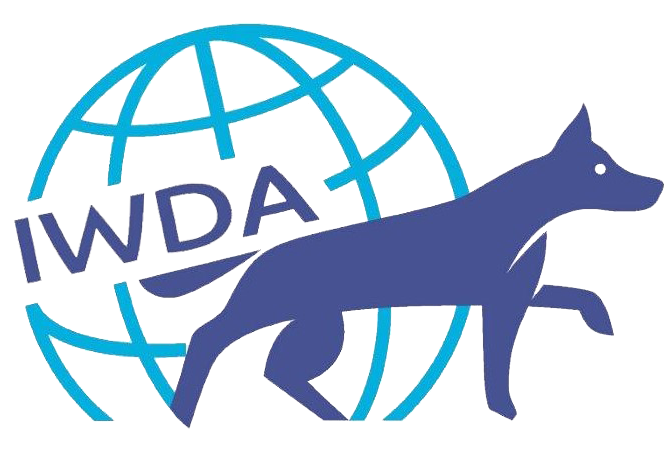IWDBA member Dr. Marty Roache, the Chief of Behavioral Medicine at the LTC Daniel E. Holland Military Working Dog Hospital at Lackland Air Force Base in San Antonio, Texas, noticed tail injuries to military working dogs at that base were causing numerous issues.
Roache, who spent nearly 20 years on active duty in the United States Army, now working as a veterinarian in the Army Veterinary Corps with the rank of major, can tell you tail injuries are very expensive for facilities, with the dog being unable to continue work/training for an extended period, requiring special medical diets or surgery and causing delays to program routines.
Lackland utilizes working dogs from two different breeding groups. “Some of our dogs we breed, and are purpose bred for military use, others are obtained from Europe,” said Roache.
At Lackland, Roache has observed certain dogs in kennels spinning wildly, labeled Abnormal Repetitive Behavior (ARB), which led to some of these canines damaging their tails and unable to pursue a planned career with either the United States Department of Defense (DOD) or the country’s Transportation Security Administration (TSA).
“The dogs we get (most are Belgian Malinois and German Shepherds) are high-energy, high-drive and want to work,” Roache said. “We need to do more research focusing on what makeup they all have and see how we can cut down on dogs that damage themselves and breed military working dogs that are more stable.”
Surgery to amputate a dog’s tail – known as tail-docking – is costly and does not always solve a canine’s behavior issue or eliminate ARM. Despite veterinarians attempts to treat the affected military working dogs with the best efforts toward their welfare, Roache and IWDBA Board Member Dr. Karen Overall believe a new approach to breeding is needed.
“Breeding has always been a craft,” said Overall. “We need to shift more of it toward science, which we are starting to do. Many of these (high drive) dogs referred to have brains that work differently and can be affected by issues such as obsessive-compulsive behavior (such as compulsive tail-chasing). We need, for both the dog’s performance and welfare, to involve more genetics in our breeding of working dogs.”
In her study, Roache (along with a contributing group that included IWDBA Board Members Dr. Walter Burghardt and Overall) concluded stress is what brings on this spinning and the ensuing damage to the dogs’ tails. This research included only military working dogs.
“We have a lot of stress factors that can affect a dog at Lackland,” Roache said. “There is a lot of noise, with a weapons range nearby, planes taking off and landing and a lot of different things that can bring on stress. All dogs react to such stress in different ways. Some handle it better than others.”
The aim of Roche’s study was two-fold. The first goal was to retrospectively identify demographic factors associated with tail injury in military working dogs. The second focus was a prospective clinical study investigating the association between the presence of tail injury, the stage of training and kennel location. Results of the retrospective study showed a significant correlation between purpose-bred dogs, sex, and breed with increased occurrence of tail injury.
Roache’s retrospective study took place between Oct. 2012 and Oct. 2016 with 5,697 dogs who were earmarked for both the DOD and TSA. Her prospective clinical study included 938 dogs performed from February-to-September 2018.
Results of the prospective study also showed correlation between purpose-bred dogs and stage of training and tail injury. These findings are intended to be used to guide future management to help prevent tail injury, reduce treatment time, and improve overall health and welfare of the entire military working dog population, and other types of kenneled dogs, such as shelter and research dogs.
There have been previous studies in Great Britain with spaniels that reveal similar numbers of tail injuries, and debates as to whether tail docking helps the working dog.
Additional genetics studies and altered selection criteria for breeding dogs could improve stability and temperament within working dog lines, particularly regarding their ability to handle stress. Some facilities have also introduced home boarding programs for dogs in training, to reduce environmental stress for dogs that are particularly affected.
Roache’s IWDC 2021 presentation is available to members on the IWDBA website (https://www.iwdba.org) within the 2021 IWDC Archives.
Learn more about Estimated Breeding Values and how this can contribute to health and temperament improvement within your breeding program here: https://www.iwdr.org/master-knowledge-base/what-are-ebvs-and-how-do-they-help/
By Jed Weisberger
